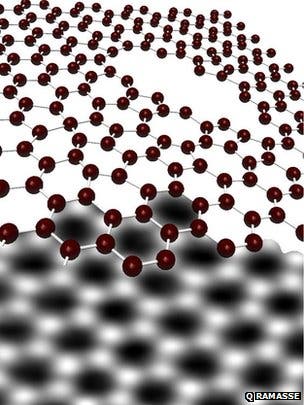Graphene is one of the most phenomenal materials discovered in science. It’s so thin, it can be molded into sheets just 1 atom thick, yet despite this, it’s so strong that you can actually pick it up. It has the highest current density (a million times that of copper) at room temperature, the highest intrinsic mobility (100 times more than in silicon), and conducts electricity in the limit of no electrons. Also, graphene now holds the record for conducting heat — it’s better than any other known material. But wait, there’s more – graphene is the most impermeable material ever discovered – so neatly packed together, that not even helium atoms can squeeze through.

Are you impressed yet? Well, add self-repair to the list. Yes, a team of researchers at University of Manchester, UK, including Konstantin Novoselov the co-discoverer of graphene and Nobel Prize laureate, have found that this amazing material can actually perfectly fill gaps within its sheets simply by bombarding it with pure carbon. I think I’m in love!
The researchers initially set out to study the effects of adding metal contacts to strips of graphene, the only way to exploit its phenomenal electronic properties. This typically leads to forming holes in the graphene sheet, a curious fact which scientists set out to study more in depth. After firing electron beams through graphene sheets and studying the damage with an electron microscope, the researchers were surprised to find that the carbon atoms in the metal molecules snapped to the graphene sheet.
When damaged sheets were bombarded with pure carbon atoms, not only did the carbon wash away any metal molecules from the surface of the graphene, but they also perfectly aligned in the gaps, forming an uninterrupted lattice of hexagons – the shape of graphene.
“If you can drill a hole and control that ‘carbon reservoir’, and let them in in small amounts, you could think about tailoring edges of graphene or repairing holes that have been created inadvertently,” Dr Ramasse said.
“We know how to connect small strips of graphene, to drill it, to tailor it, to sculpt it, and it now seems we might be able to grow it back in a reasonably controlled way.”
The findings were reported in the journal Mesoscale and Nanoscale Physics.


